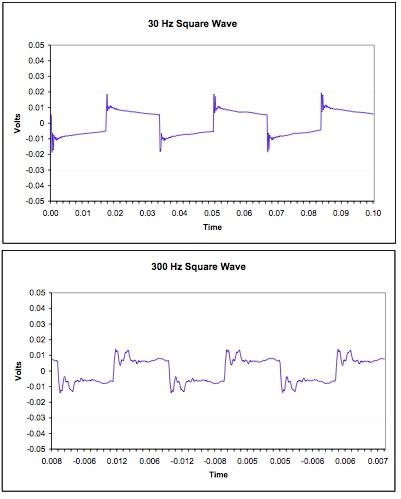- Joined
- Nov 26, 2002
- Posts
- 2,994
- Likes
- 1,494
Quote:
...
So, the experiment I did the other day was to position the headphones as best I could, take a measurement, and then change the position slightly. Five measurements were taken: centered, up-forward, up-behind, low-forward, and low behind. The data looks like this:

You'll notice two things: it looks somewhat like the various compensation curves mentioned above, and once you get above 8kHz the data moves all over the place.
Tyll, just found out about this thread today (I should visit this section of the forum more often) and wanted to congratulate you for once again stirring us in the right direction.
Your studies on sensitivity of measurements to placement and the proper way to digest the test data into something meaningful is particularly helpful! I have suspected for a long time that headphone measurements at higher frequencies may be a crap shoot at best if not massaged properly and am glad to see some rigorous demonstration...
I deal with high frequency vibro-acoustics (both simulation and testing) in my job and one thing that is very clear: anyone who think they can reproduce measurements without spatial / frequency averaging at higher frequencies are fooling themselves... It's nature of the physics of sound and vibration at high frequencies (google Statistical Energy Analysis if you want to know more...) and the reason why your pragmatic approach is a very good one (averaging measurement over slight variation in positioning and doing some frequency smoothing).
I would be happy to support you if I can help in any way although I realize I am coming a little late here
 . One thing you mentioned early in the thread is how to get better diffuseness of sound field for isolation measurements:
. One thing you mentioned early in the thread is how to get better diffuseness of sound field for isolation measurements:- I think the results will not be very good below 3-400Hz because there are not sufficient number of modes in the cavity to support diffuse sound field. However, from looking at your curves, looks like it's a moot point because most headphone don't provide any isolation below 1kHz or so?
- As you mentioned, one way to increase reverberation is to remove the sound absorbers so maybe you could glue the foam pads on a thin board which you could then slide in and out of the test chamber for specific measurement?
- Another which you already know also it seems: use several speakers at different locations.
- Last recommendation is to add rigid panels placed randomly in the chamber to increase reflections (google reverberant chamber ) although I doubt it's practical in your small box...
For increase the sound isolation from the outside, it depends on the frequency range, but generally speaking:
- At low frequency, you typically need to add mass to your panels, one way is to add lead panels (you might not be happy about that if you're planning to take it in/out of your truck often
 . I think you can buy some similar stuff of adding to car door panels (for bass heads how have issues with subwoofer rattling the whole car...)
. I think you can buy some similar stuff of adding to car door panels (for bass heads how have issues with subwoofer rattling the whole car...) - At mid frequencies, you typically need to add mechanical damping to the enclosure panels. One way is to user rubber like material between the main panel and the inner board (well it's too late for that now though). Incidentally, the lead barrier above can also provide some mechanical damping to the enclosure panels.
- At higher frequencies, you typically need to control leakage. Any tiny slit or hole will kill your hopes of isolation over 20dB... You've got this one under control it seems.
Lastly, I will say just the waterfall plot for headphone might also be relevant. Although we won't see the strong panel / cavity resonances of speaker enclosure I would believe that some resonances in ear cup cavities and diaphragms might become visible (taking longer to decay than the rest of the spectrum).
Quote:
Originally Posted by xnor
Noooo, (too much) smoothing is evil!
Imo, not only does it get rid of the spikes that could be accounted for driver resonances (admittedly CSD would be more useful here) or construction imperfections ... but the smoothing could make any headphone look good. (and maybe sell well? That's not what this should be about, right?)
Looking forward to those measurements. Thank you for doing this.
I think there is no other way around, see above...



























